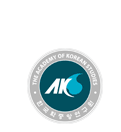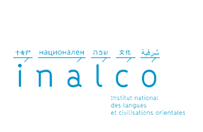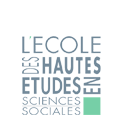Dans le cadre du séminaire de Sciences et savoirs de l’Asie orientale de la mondialisation de l’UMR CCJ,
Catherine JAMI et Frédéric OBRINGER organisent
une conférence intitulée
« Calendars and Calendrical Knowledge in Pre-modern Korea »
donnée par JUN Yong-Hoon (AKS)
Mardi 28 février 2017 de 15h à 17h
EHESS / Salle Elisabeth Allès
190 avenue de France 75013 Paris
Calendars and Calendrical Knowledge in Pre-modern Korea
This talk will start with a brief introduction to some annual calendars used in pre-modern Korea, especially in the period of the Joseon 朝鮮 dynasty (1392-1895). The Korean annual calendars are made up of two main parts: ① Dates 曆日, ② Annotations 曆註. The dates involve the length of the year 年 (a lunar year), twelve synodic months 朔望月, twenty-four fortnightly periods 二十四節氣, days 日, hour-pieces 時辰, and an intercalary month 閏月 if necessary. All these units of dates are expressed by sexagesimal marks 六十干支. The annotation, which is made to each temporal cycle such as year, month, day, and hour 年月日時 by the method of shushu 術數 or fortune-telling system, provides certain behavioral rules for the people using the calendar in their daily lives.
Even though we can see on a Korean annual calendar the name of reign period 年號 or the name of calendar 曆書名 that was not different from the Chinese ones, it was no doubt made in Korea. Koreans applied the Chinese calendrical knowledge to their own calendar-making but under some restrictions. This is because of the Sino-Korean tributary-investiture relationship 朝貢冊封關係 under which a Korean-style astronomical enterprise was formed and practiced. This political and diplomatic relationship theoretically allows no Korean kingdoms to make their own annual calendars. For ‘Astronomy’ in the traditional East Asian ideology was an exclusive subject only the Son of Heaven 天子, the Chinese emperor deserves to manage. Once a Korean kingdom entered in a sort of treaty of investiture with China, it became a subordinate state to China. Then, the Korean kingdom ought to adopt an annual calendar made under the authority of the Son of Heaven and distribute it in its state. The investiture, however, do not mean that China actually governed any Korean kingdom; it was instead an emblematic act by which the Korean king was given the authority to rule his country. Hence a Korean king could develop his own astronomy through the connivance of the Chinese authority, and he indeed made and issued annual calendars for his people by adapting Chinese calendrical knowledge to his country. These are the political and ideological contexts that made Korean history of astronomy a ‘Korean’ one.






